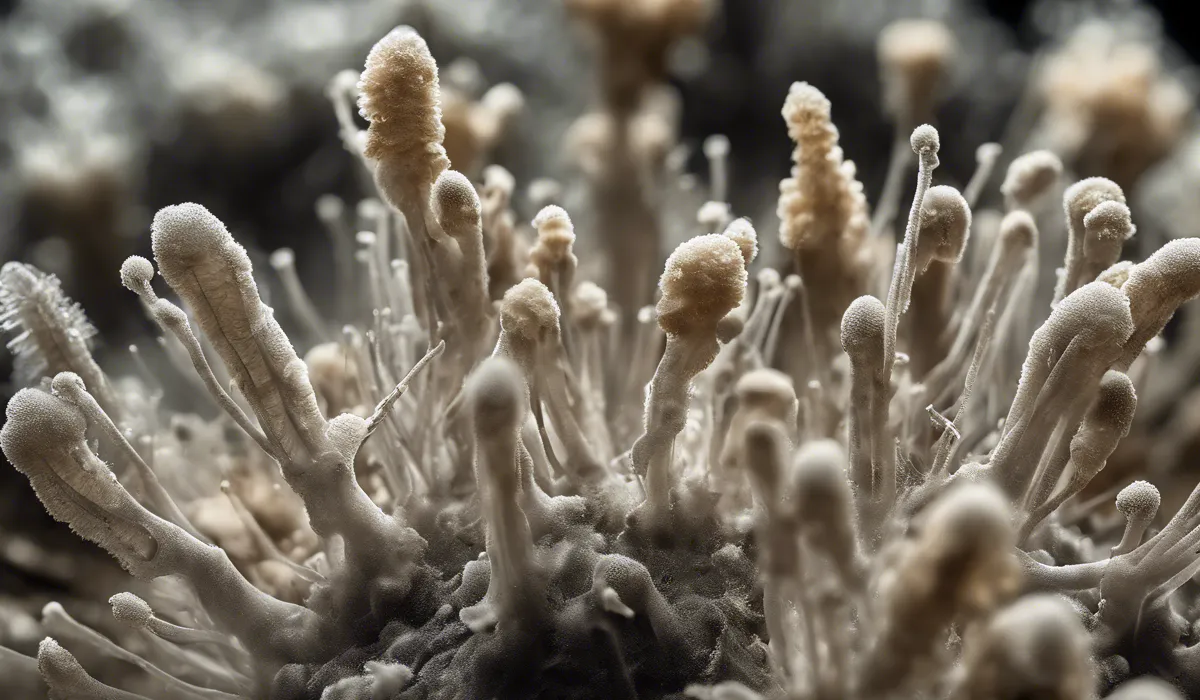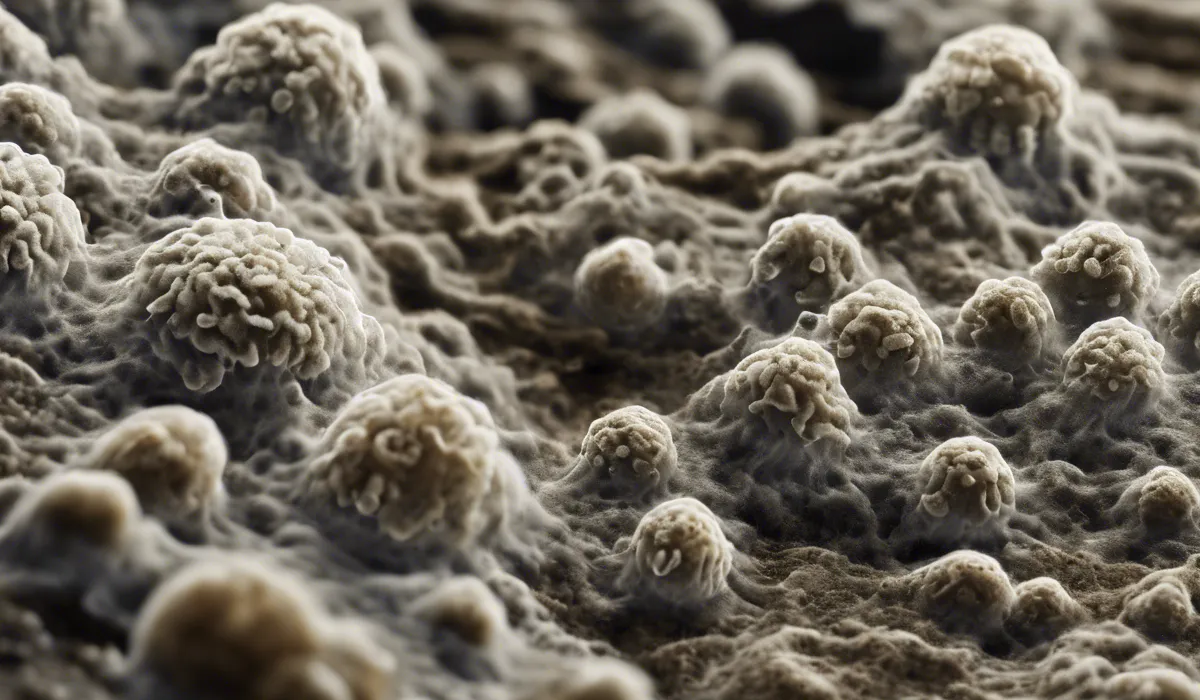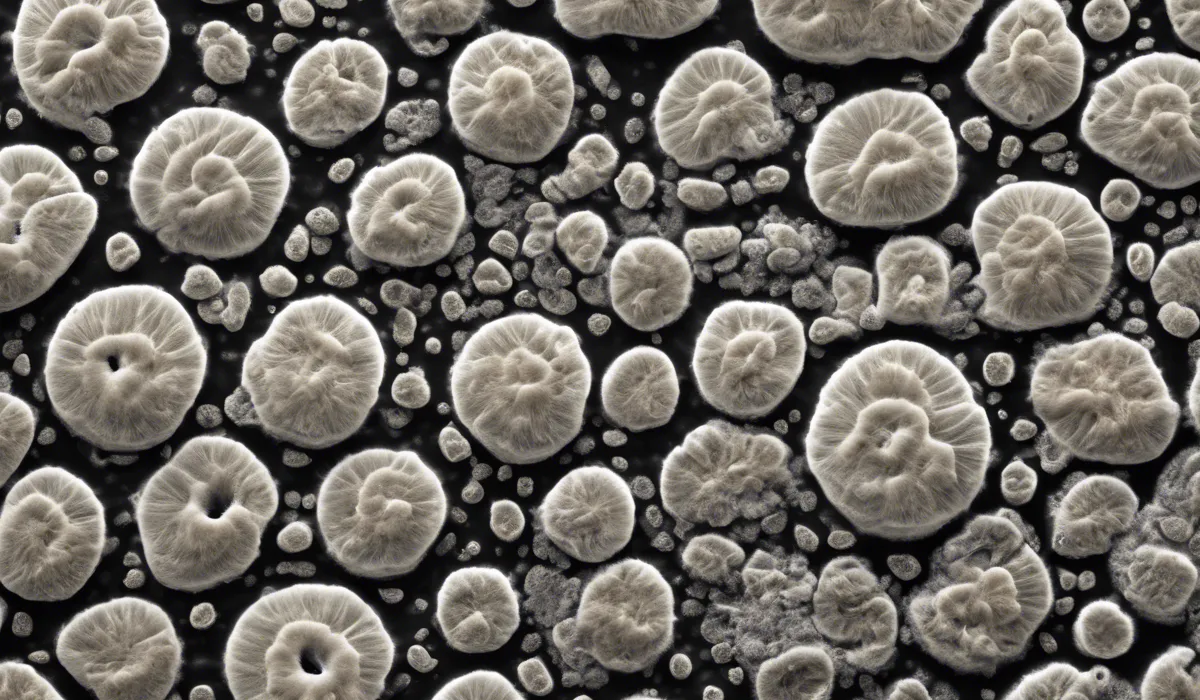Mold spores can remain dormant for years, but typically live for 1 to 9 days in active conditions. Their viability depends on environmental factors such as humidity and temperature. Without moisture, spores cannot grow into mold.
Mold Spore Lifespan

Understanding Mold Spores
Mold spores are tiny, seed-like structures produced by mold fungi. They are present almost everywhere in our environment, both indoors and outdoors.
Mold spores can travel through the air and settle on surfaces, waiting for the right conditions to grow into new mold colonies.
Temperature’s Role in Spore Viability
Temperature plays a crucial role in the life of mold spores. Generally, mold spores thrive in warm conditions. Extreme cold or heat can make it difficult for spores to survive.
However, some spores can remain dormant and withstand these conditions until temperatures become favorable again.
Humidity and Mold Spore Survival
Mold spores need moisture to grow. High humidity levels provide the perfect environment for spores to become active and develop into mold.
Conversely, low humidity can help to keep mold spores dormant, preventing them from growing.
Impact of Light Exposure on Spores
Light exposure can affect the viability of mold spores. Ultraviolet (UV) light from the sun is known to kill some types of mold spores.
In contrast, dark and shaded areas can provide a safe haven for spores, where they are protected from the sun’s UV rays.
Availability of Nutrients for Spores
Mold spores require nutrients to grow. They can feed on various organic materials found in homes, such as wood, paper, and fabric.
The availability of these nutrients can significantly influence the growth of mold from spores.
Lifespan of Mold Spores in Different Conditions
Indoors vs. Outdoors
Indoor environments, where temperature and humidity can be controlled, often allow for a longer lifespan of mold spores compared to the outdoors. Outside, the elements can be harsh, with changes in weather and exposure to sunlight limiting their survival.
Inactive vs. Active Spores
Inactive mold spores can remain dormant for years under unfavorable conditions. Active spores, those in environments with sufficient moisture and nutrients, typically live for 1 to 9 days before developing into mold.
Surviving Extreme Conditions
Mold spores are resilient. They can survive in extreme conditions by remaining dormant. Once conditions improve, they can become active and start the growth process.
Detection and Health Risks of Dormant and Active Mold Spores

Identifying Mold Spores
Visual Inspection for Mold
One can often see or smell mold in their homes. Mold can appear as discolored patches or give off a musty odor. These signs can indicate the presence of mold spores and colonies.
Using Mold Testing Kits
Mold testing kits are available for purchase. They can help to detect the presence of mold spores in the air or on surfaces. These kits usually involve taking samples and sending them to a lab for analysis.
Professional Mold Inspections
For a thorough assessment, professional mold inspection services can be employed. Experts use specialized tools to detect mold spores that might not be visible to the naked eye.
Health Effects of Mold Spore Exposure
Allergic Reactions and Respiratory Concerns
Exposure to mold spores can cause allergic reactions and respiratory issues in some individuals. Symptoms may include sneezing, coughing, and difficulty breathing.
Risks of Long-Term Exposure
Long-term exposure to mold spores can lead to more severe health problems. These issues can range from chronic respiratory conditions to immune system disorders.
Populations at Greater Risk
Individuals with pre-existing health conditions, the elderly, infants, and those with weakened immune systems are more susceptible to the effects of mold spores.
Strategies for Controlling and Eliminating Mold Spores

Preventive Measures for Mold Spores
Managing Indoor Humidity Levels
Keeping indoor humidity below 50% can significantly reduce the likelihood of mold spore survival and growth. Dehumidifiers and air conditioners can help maintain low humidity levels.
Ensuring Proper Ventilation
Good airflow can prevent the accumulation of damp air that mold spores need to grow. Opening windows and using exhaust fans can improve ventilation.
Maintaining Regular Cleaning
Cleanliness can deter mold growth. Regular cleaning routines that remove dust and potential mold food sources can keep mold spores at bay.
Remediation Techniques for Mold
Cleaning and Disinfecting Affected Areas
Areas affected by mold should be cleaned and disinfected thoroughly. This process involves using mold-killing solutions on non-porous surfaces and properly discarding porous materials that cannot be cleaned.
Utilizing HEPA Filters and Air Purifiers
HEPA filters and air purifiers can capture mold spores from the air, reducing the number of spores that can settle and grow in your home.
Seeking Professional Mold Remediation
When mold contamination is significant, professional mold remediation services may be necessary. These experts have the equipment and expertise to safely and effectively remove mold from your home.
Preventing Recurrence of Mold Spores
After addressing mold issues, it’s crucial to take steps to prevent its return. This can involve fixing leaks, using mold-resistant building materials, and maintaining the preventive measures outlined above.
By creating an environment that is not conducive to mold growth, you can keep your home healthy and mold-free.
FAQs About Mold Spore Lifespan
How long can mold spores remain dormant?
Mold spores can remain dormant for years, waiting for favorable conditions to activate and grow.
What is the typical lifespan of active mold spores?
Active mold spores typically live for 1 to 9 days, depending on environmental conditions.
What environmental factors affect mold spore viability?
Humidity and temperature are the primary environmental factors that affect mold spore viability.
Can mold spores grow without moisture?
No, mold spores cannot grow into mold without moisture.
Do mold spores die if there is no moisture?
Mold spores do not necessarily die without moisture; they can remain dormant until moisture becomes available.
Final Thoughts
Mold spores can survive in a dormant state for extended periods, potentially years, under unfavorable conditions.
However, when active, their life span ranges from 1 to 9 days, influenced heavily by environmental factors such as humidity and temperature. Crucially, spores require moisture to transition into mold growth, emphasizing the importance of a dry environment for prevention.
